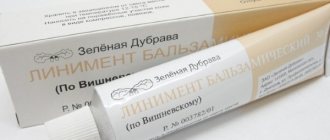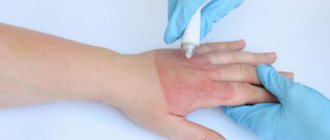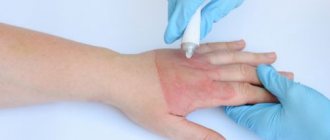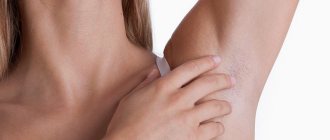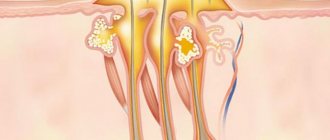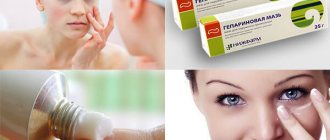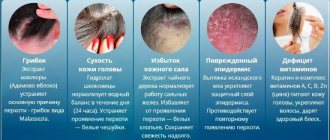The appearance of a lump on the upper or lower eyelid is a fairly common problem. Occasionally, such a nuisance can even occur on both eyelids at the same time. There are cases when the bumps that appear fester and hurt, but often they do not cause any particular inconvenience, but they look very unattractive. The bumps on the eyelids can be large or tiny - no larger than a millet grain. And yet, each of them deserves attention and serious consideration because of the possible threat to vision.
Stages of development
It is worth noting! Barley does not usually form suddenly and goes through three stages of development:
- Initially, there is redness and mild swelling in the affected area. At this time, a person gets the impression that a foreign body has entered the eye, but no signs of debris or other parts are detected during visual inspection.
- At the next stage, itching begins in the affected area, and the patient may develop uncontrollable lacrimation. The redness of the mucous membrane intensifies, thick discharge begins to form in the corners of the eyes, which quickly dries out.
- After a few more days, you can clearly see the head of the boil: it differs in color compared to healthy skin and is most often yellow or yellowish-white.
Stages may have different durations. This is due to the varying degree of functioning of the immune system in each patient, as well as the causative agent of the disease and the severity of the lesion.
Furuncle
A boil on the eyelid is one of the most dangerous lumps. The disease causes purulent necrotic inflammation of the ciliary follicle, sebaceous glands, and surrounding connective tissue. The main cause of boils is staphylococcus.
Typically, the localization of the boil is the part of the upper eyelid close to the eyebrow. Much less commonly, a lump appears on the edge of the eyelid, very close to the eye.
In its development, the disease goes through the following stages: first, a small painful nodule appears and the surrounding tissues swell (sometimes both the eyelid and the entire side of the face swell); after a few days, a yellowish abscess appears at the top of the nodule. Then the node fluctuates, the abscess opens with emptying of the contents. On the eyelid, after opening the boil, a plug (rod) remains, consisting of purulent masses and necrosis products, which after some time spontaneously comes out. As a rule, a small scar remains at the site of the boil.
A painful lump and swelling are not the only signs of a boil; the patient often feels weakness, headache and fever.
Treatment of a boil must be carried out by a doctor who will prescribe the necessary medications (antibiotics, sulfonamides, painkillers) and, if necessary, open the abscess. It is prohibited to squeeze out boils yourself.
Causes
Such formations on the eye occur for the following reasons:
- constant contact with dust , polluted air or chemicals;
- development of allergic reactions to external irritants and cosmetics;
- disturbances in the functioning of internal organs;
- lack of proper and regular care for delicate and sensitive skin;
- violation or failure to comply with personal hygiene rules ;
- any minor or serious damage to the eye area (scratches, abrasions, cuts to the eye).
Know! Diabetes mellitus and poor immune function can also be indirect causes of the development of boils.
In these cases, pathogenic and conditionally pathogenic microorganisms entering the body can cause inflammatory processes in any organs, including in the eye area.
Xanthelasma
It is more likely not a lump, but a flat plaque. The problem of xanthelasma is more often encountered by women with hypercholesterolemia, diabetes and a number of other diseases. Xanthelasmas are yellowish in color and rise very slightly above the surface of the skin. They can appear on the eyelids, the skin near the eyes, and on the face. A single lump of xanthelasma is rare; as a rule, they appear in groups and never go away on their own. This is due to the fact that xanthelasma is the result of a lipid metabolism disorder caused by the underlying disease. If such a problem occurs, you must notify your doctor, who will advise what to do.
Treatment
Since the patient can determine the appearance of a boil on his own, there is always a chance for favorable and timely treatment.
Most often it is performed on an outpatient basis.
The main thing is to follow the rules of treatment, which state:
- Independent and premature opening of chirps on the eye is unacceptable . Since this may lead to additional infection or if the procedure is carried out incorrectly, pus will remain in the wound after opening.
- If suppuration is obvious the pathology is treated with antibiotics . But you cannot select them yourself, since not all drugs can provide the necessary therapeutic effect.
- When treating formations at home, before any procedures, it is necessary not only to thoroughly wash your hands, but also to disinfect the area around the boil . This will help prevent other bacteria from getting into the organs of vision and into the boil itself if it opens spontaneously.
- Despite recommendations to apply compresses , this procedure must be performed carefully , since in some cases this procedure increases suppuration.
Important! Any independent intervention when boils appear can always have negative consequences in the form of cosmetic effects and more serious ophthalmological complications.
Therefore, it is always better to trust treatment to specialists.
Medical supplies
When treating boils, drug therapy is considered the most effective , but only if it is agreed with an ophthalmologist and prescribed in a timely manner.
In the early stages of pathology development, treatment with antibacterial ophthalmic solutions (drops) is allowed.
But this method is not suitable if the boil has appeared on the eyebrows. When such drops are instilled, their active ingredients will gradually penetrate the tissues of the affected eyelid, affecting the boil from the inside.
One of these products is antibacterial drops Albucid, which have an additional bacteriostatic effect.
Remember! The drug is instilled 4 to 6 times a day, two drops into each eye (this is necessary to prevent the pathogen from spreading to a healthy organ of vision).
The duration of treatment is determined by the severity of the disease.
Chalazion
The lump caused by this disease is considered one of the most common problems. In another way, it is also called “hailstone” and “cold barley”. The cause of chalazion on the eyelid is blockage of the sebaceous glands. When the outlet for sebaceous secretion is blocked, the contents that are constantly being formed cannot find a way out and accumulate inside the duct. After some time, the sebaceous secretion stretches the duct and gradually hardens. If you touch such a bump, you can easily feel the dense capsule of the chalazion, which, like a ball, rolls under your fingers.
The chalazion develops slowly, painful sensations on palpation appear only when the accumulated secretion has formed a capsule. But even in the case of a practically painless course, it is better not to delay the treatment of chalazion, so that a cyst does not form. In addition to pain, chalazion may be accompanied by local redness of the conjunctiva. In its acute period, the following are possible: suppuration, granulation (excessive tissue growth), the occurrence of a fistula through which pus drains.
Naturally, chalazion rarely resolves. As a rule, such a lump needs to be treated, which is what an ophthalmologist does. In this case, treatment can be conservative or surgical. Usually, at an early stage, the doctor may prescribe UHF therapy, certain eye drops and mercury ointment. Painful chalazions at a later stage are treated with corticosteroid injections (directly inside the capsule), ointments and drops (sodium sulfacyl, ofloxacin, hydrocortisone, dexamethasone, levofloxacin and tetracycline ointment). If drug treatment does not produce the desired effect, the question of surgery is raised. Chalazion removal is performed on an outpatient basis under local anesthesia. The entire procedure lasts 10–15 minutes, after which the patient goes home.
Description of the drug
The pharmaceutical product in question has become widespread in the treatment of dermatological diseases due to its regenerating and disinfecting properties. In the last decade, the composition has been actively used in cosmetology to eliminate acne and sebaceous plugs.
The use of Vishnevsky ointment for boils is due to the directed activity of the components in relation to pathogenic microflora:
- fungi of the Candida family;
- streptococci and staphylococci.
The medication activates biochemical processes, thereby increasing the rate of regeneration of affected tissues. Due to this property, patients are often limited to monotherapy and do not resort to potent systemic medications.
Clinical and pharmacological group
Balsamic liniment is an antimicrobial, anti-inflammatory agent, an external preparation that accelerates tissue regeneration. According to its therapeutic properties, it is an antiseptic. In simple terms, Vishnevsky ointment is a broad-spectrum medicine. Its peculiarity lies in the fact that no clinical studies of the medicinal composition have been conducted, and pharmacodynamics and pharmacokinetics have not been officially recorded.
pharmachologic effect
The pharmacological properties and therapeutic effectiveness of the drug in question for furunculosis are due to the fact that balsamic liniment acts comprehensively on all layers of tissue.
- Castor oil eliminates the risk of pathogenic infections entering disease-affected pores. The substance eliminates moisture deficiency at the cellular level. Emollient properties accelerate the exfoliation of the keratinized epithelial layer with subsequent replacement by young tissues.
- Xeroform acts on bacterial enzymes through the oxidation of sulfhydryl compounds. Due to this mechanism, the activity of pathogenic microflora and protein coagulation are inhibited.
- Birch tar includes a number of organic compounds with pronounced antiseptic properties. These substances have a local irritant effect, which increases the intensity of blood flow in problem areas.
The considered mechanism promotes the rapid removal of exudate with necrotic and purulent residues to the surface of the epidermis and the resorption of infiltrates.
Release form and composition
The pharmaceutical product is produced in the form of balsamic liniment (less thick consistency when compared with regular ointment). Vishnevsky ointment is applied to the boil only externally, pointwise. The thin form of the composition allows you to evenly distribute the brown-yellow drug.
Vishnevsky ointment in an aluminum tube
The medication does not contain substances that are potentially hazardous to human health. All components are natural, of natural origin.
Composition of the pharmaceutical product:
- Birch tar;
- xeroform;
- Castor oil.
The main disadvantage of liniment is the unpleasant specific smell that most patients do not like.
Vishnevsky ointment is available in aluminum tubes of 30, 35 and 40 g. Each tube is placed in a cardboard package with instructions for use. In pharmacies, the medicine is also sold in darkened glass jars of 100, 50, 40 and 25 g.
Furuncle, boil in the groin in men and women: symptoms, causes, photos
Initial stage of furunculosis
Ripe boil
Opening a boil
Scientists have found that the most common cause of a boil is the staphylococcus bacterium. Once on the skin, it almost immediately begins to inflame the hair follicle, thereby provoking the development of a purulent process.
Therefore, if you notice that abscesses appear in your groin with enviable regularity, then be sure to get tested and find out if you have become infected with staphylococcus. If this is the case, then you will need to fight both the pathological bacterium and the furunculosis that it provokes.
Other causes of boils in the groin in men and women:
- Poor immunity . If the body's defenses are at zero, then even the slightest injury to the skin in the groin area can lead to inflammation of the hair follicle and sebaceous glands.
- Poor nutrition. Due to the fact that the internal organs do not receive the substances they need, the body works for wear and tear. And this leads to the fact that a person’s defenses are catastrophically reduced, and as a result, various inflammatory processes are activated.
- Untimely implementation of hygiene procedures. If a man or woman does not wash their genitals every day, sooner or later this will lead to the formation of boils in the groin area. This will happen due to a banal blockage of the sebaceous glands.
- Uncomfortable underwear. Tight or simply too small panties can seriously injure the skin in the groin. From constant friction, cracks will appear on it, into which pathogenic bacteria can enter and this will also lead to the appearance of boils.
- Excessive sweating. In this case, a so-called greenhouse effect is created under the underwear, which contributes to clogging of the pores and inflammation of the hair follicle.
- Hypothermia. If a person freezes for days on end (sits in a draft, washes with cold water, or simply dresses poorly), then this greatly affects his immunity and, as a result, he no longer has the resources to fight furunculosis.
- Shaving . Incorrect or careless shaving of the groin area can lead to the appearance of wounds, which can subsequently become infected with the same staphylococcus or other pathogenic bacteria.
Symptoms of a boil in the groin
Symptoms of a boil in the groin:
- At the first stage, you may feel only slight discomfort in the area where the boil will subsequently appear. A noticeable change in the color of the skin can complete the picture.
- After some time, the pain begins to intensify, and a hard-to-touch seal appears inside the red spot. At this stage of the disease, quite severe itching and noticeable tingling in the area of inflammation may appear.
- At the next stage, blood, lymph and pus begin to accumulate under the skin. All this leads to the fact that the pain intensifies, the compaction increases in size and the so-called white head appears. If furunculosis is very acute, then fever may be added to all the symptoms described above.
- After the boil breaks out, blood, pus and rodents come out of it. If you carried out the correct treatment, then after the follicle is cleared of all excess, only a crater-shaped pit with slightly inflamed edges will remain on the skin. As it heals, the soreness of the skin will also go away.
How it works and when it can be used
Vishnevsky invented liniment in 1927, the product continues to be used in medicine. The disappearance of ulcers under the influence of the ointment occurs due to the medicinal properties of the drug:
- The composition includes Xeroform - a substance with a disinfecting effect, disinfects the surface and core of the formation, reducing the activity of staphylococci.
- The second component is birch tar. Vishnevsky ointment acts on the boil, affecting the three main internal processes of the inflammatory focus: blood flow, metabolism, and the ability of tissues to regenerate. Increases the intensity of blood circulation, metabolism, and the speed of wound healing. Birch tar reduces the duration of the abscess maturation phase. The disease progresses faster and recovery occurs earlier.
- The third component is a conductor for active substances, castor oil. It softens the tissue, and birch tar and xeroform penetrate deep into the boil without obstacles.
The listed substances and properties of the Vishnevsky ointment make it possible to use it in the infiltrative stage of the disease. The drug will help break through the boil. Early start of treatment with liniment will ensure quick disposal of the abscess.

